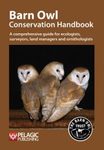Review of the first edition:
"This is a monumental book about what is regarded as the fastest animal on the planet (or flying over it). At over 500 pages, and amply and attractively illustrated, this is a tribute to and reference source about a marvellous bird. The brilliance of this bird is well captured in many of the photographs but the text is full of information about Peregrines from everywhere in the world where they occur.
Chapters cover falcons in general, an introduction to this species, flight, diet, breeding behaviours and characteristics, movements, friends and foes and population numbers and trends. It feels like an encyclopedic coverage and the book is packed with information, but information delivered in a very palatable form.
I am a fan of this species but I can’t say I want to know everything about it – although if the time comes when I do, I’ll know to look here – but the book is a good read. As a biologist, rather than as a raptor fan, I enjoyed reading the account of sexual dimorphism in size of this species (and many other raptors, but not a great many other species of bird) and found the explanation of competing explanations for the phenomenon to be very good.
I’ve often seen figures for percentage success of attacks on prey for this species, and for other raptors, and, even in my experience of the birds in the field, have wondered quite how observers decide what is a serious attempt at a kill and what amounts to a test or just larking about. I remember watching a Peregrine on Speyside, something like 50 years ago, chasing a Swift around and it looked like it was playing. Now, whether or not it could really have been described in that way, it would have been questionable as to how many, if any, attempts were real ones.
The chapter on friends and foes was very interesting, and covers the species’s interactions with other birds and mammals, some of which is fascinating. Ten pages in the Population chapter are devoted to human persecution of Peregrines in the UK, much of it on areas managed for grouse shooting. I was unaware of the 2011 paper by McMillan in Scottish Birds and I am now very keen to read it. But the discussion ranges widely over the studies and, no surprise here, comes firmly to the view that deliberate and systematic illegal killing of protected wildlife is rife on grouse moors.
This is a phenomenal piece of work, from which 10% of the sales income will be donated to Raptor Aid.
The cover? Interesting choice – I’d give it 7/10."
– Mark Avery
"Like me, you may be a devotee of Derek Ratcliffe’s ground-breaking The Peregrine Falcon, Poyser, 1980 and 1993 (2nd ed). Trust me, however. If you’re in at all interested in the world’s most successful avian predator, you’ll need this astonishing work. Even Derek would have wanted it. It is the most beautifully illustrated, last word on the beast.
There is barely a feather’s weight of peregrine information that has been left out. The text on the diet alone, which is possibly among the widest in any raptor, runs to 80 pages. Of special note is the way that the authors take to task all the many exaggerated claims about peregrine speed. Their reassessment is a model of meticulous exposition.
Yet the thing I love most is the way the hard science, undergirded by the clearest and boldest sets of graphics or pie-charts I’ve ever seen, works in conjunction with the photographs to create an integrated, informational and aesthetic whole. It is truly magnificent. The images, in fact – 150 in total, packed with all sort of insights and details in their own right – are worth the cover price by themselves.
Instantly it upgrades peregrine scholarship. It will be consulted for decades. It has a bibliography that runs to 32 close-typed pages and I was rather excited to find myself in its list. Not for anything I might have said in the 700,00 words of Birds Britannica or Birds and People. But because in 2007 and long forgotten by its author – but grist to the mill for these peregrine afficionados – I wrote a one-page note on a hunting bird assailed by cheeky crows. Of course, they wouldn’t miss it. And so fame at last!"
– Mark Cocker

































